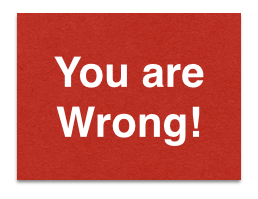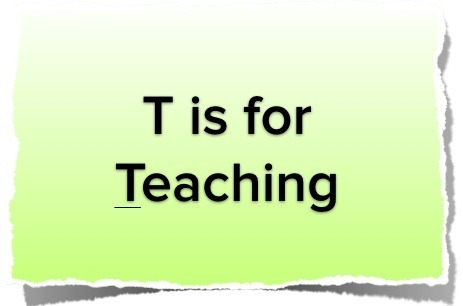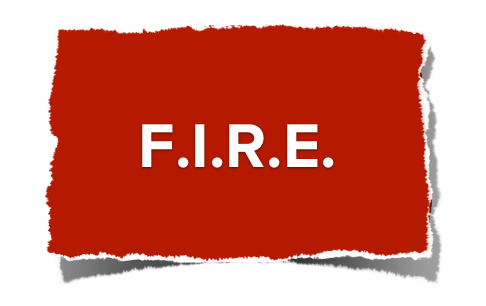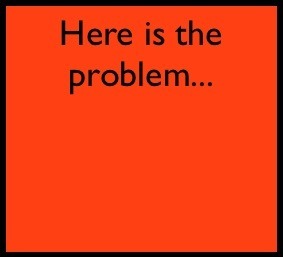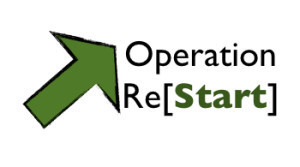Rajesh Setty's Blog, page 2
April 2, 2014
Mini Saga #133 – Boomerang
Mini Saga #133 – Boomerang
Tom and Jack were arguing about a bug in the program. The argument escalated as they vehemently disagreed with the approach to solve the problem. Jack was angry and said, “It doesn’t matter what you say next Tom because you will be wrong.” Tom smiled and said, “You are right.”
Watch what you say – you don’t want to shoot yourself in the foot.
Note:
1. A mini saga is a story told in exactly 50 words. Not 49 or 51 but exactly 50.
2. You can download a photographic manifesto of Mini Sagas at ChangeThis. Here is the link – Mini Sagas: Bite-sized Wisdom for Life and Business (PDF, 2.9MB).
3. For a complete list of Mini Sagas, please see the entire list here or at Squidoo
March 29, 2014
Mini Saga #132 – Banter
Mini Saga #132 – Banter
At the end of the second over, the batsman walked aggressively towards the slip fielder. Andrew, the Umpire promptly gets him back.
Batsman asked, “Why?”
Andrew said, ‘Thou shall not get into a fight with the fielder!”
Puzzled batsman replied, “But… I just asked him to tie my shoe laces!”
Sometimes, we overdo our jobs (not intentionally, of course)
Note:
1. A mini saga is a story told in exactly 50 words. Not 49 or 51 but exactly 50.
2. You can download a photographic manifesto of Mini Sagas at ChangeThis. Here is the link – Mini Sagas: Bite-sized Wisdom for Life and Business (PDF, 2.9MB).
3. For a complete list of Mini Sagas, please see the entire list here or at Squidoo
4. This mini saga is based on the real-life story shared by my friend SriG







February 22, 2014
Why MANY Smart People Don’t Get the Support They Deserve
You may have experienced this (or might have seen someone go through this situation) – you are on to something big and need a LOT of help but even people who have known you for a while are not actively supporting you in your quest. They seem to listen to everything and say encouraging words about your adventure but when it comes to doing something, they shy away from it.
It bothers you because you have known these people for a LONG time and these are some people that you would totally expect 100% support from. They should be the ones that should fully understand your potential and lend their hand.
What could be wrong?
As part of my mini-research, I talked to dozens of people who have been through this situation. My quest was to find a pattern and use that understanding to see how smart people can get unstuck when they are faced with such a situation.
While I could find a number of reasons, none of them could be as strong as the burden of the story gap. Let me share this in detail below and follow that up with a few ideas to relieve yourself of that burden.
The Burden of the Story Gap
There is a difference between
a) Your true potential
b) Your potential as perceived by your core group
Pick a time a few years ago when both (a) and (b) were approximately at the same level. For this example, let’s take a snapshot of time five years ago. Your core group of friends have probably watched you from close quarters and have seen you accomplish things. It was NOT difficult for them to assess your potential based on the results you are producing.
BUT, there was a limitation.
What they could not see was what you were doing when you were not around them. The investment you were making in yourself to grow an become better. Everyone grows but you decide to invest disproportionately more in yourself than what the average professionals will invest in themselves to learn and grow. Naturally, your growth trajectory is different from what you see with average professionals.
In a span of few years, your potential is at a level that’s vasty superior to that of the average professionals around you.
You know it and you can feel it.
BUT…
There is a gap.
It’s the story gap between your true potential and your potential as perceived by your core group.
It seems like common for your core group to assume a traditional growth path for you because that’s what they are seeing in everyone else around you. To add to that, you DON’T have superior accomplishments to prove to them otherwise. You have the competence, capacity and drive to get there and that’s where you need help but without those superior accomplishments, they don’t have enough reasons for them to believe that you are indeed DIFFERENT. It’s a catch-22 situation.
As long as there is a story gap, you will get support for your projects that they believe could be achieved by your “perceived potential” and not those that can be accomplished through your true potential.
What can you do now?
Simply stated, you need to bridge the story gap for them start seeing your true potential.
Here are some ways to get started:
1. Progressive Micro and Mini-Accomplishments Along the Way:
Your ambitions may be sky-high but you get there step by step, via micro and mini accomplishments along the way. Preparation is very important but upi have to provide a way for people to say that you are on a different trajectory of growth as compared to others.
2. Extend Valuable Help
An act of valuable help not only is good for those that got that help but it’s also good for YOU. Whatever skills you are providing valuable help with are the skills that you are strengthening. When you provide that kind of help time and again, you win in the short-term and the long-term
3. Tell Your Story vis Lessons Learned
This is about not simply telling your story but the lessons learned as you went on a meaningful quest. Simply telling your story is akin to tooting your own horn. When you extract the lessons from your various quests, your story turns into a gift – an education for those that are thinking of similar paths.
Remember that those that know for a long time have a certain view about you and only YOU and YOUR CONTRIBUTIONS can bridge the story gap.







February 11, 2014
T is for Teaching
Teaching is one of those evergreen triple-win opportunities. You rarely go wrong with it when you do it well.
Think about it:
If you teach something well, whatever you are teaching becomes clear in your own mind and you will become better at it.
On the other hand, the people you are teaching to will learn something and they will grow.
There is an additional bonus: Teaching is a valuable gift and when you engage in teaching with genuine care, more often than not it will activate the power of reciprocation in the other person. When used right, it becomes your secret to high-leverage.
Let’s drill down deeper into all the three aspects:
1. Your Growth:
Real learning – learning that goes into your background thinking requires a bit more work. Here are a few elements that will make learning better:
1. Reading/Listening/Watching: This is the starting point. You start a new learning journey by reading, listening and watching or doing a combination of one or more of the above.
2. Reflecting: Taking time to reflect on what you took as input is crucial. This is where you synthesize your learning.
3. Conversing: Conversations trigger new thoughts about what you learned and probably deepen your understanding.
4. Teaching: Teaching requires preparation and that is where the magic is. The act of teaching forces you to think and prepare and in that process you grow.
5. Writing: Writing takes learning to a whole new level. It is where you have to collect and collate your thoughts, reflections, new thinking and summarize it.
The item #4 – teaching is at the heart of accelerating your learning.
2. Their Growth:
Think about your own childhood. The quality of your teachers greatly influenced the love for the subject they were teaching. Flip that around and you will notice that when you teach a topic passionately, it will generally increase the love for that topic amongst your audience.
When people around you are growing, automatically the energy, enthusiasm and optimism goes up helping everyone along the way.
3. The Reciprocation
You don’t teach because you want to capitalize on the power of reciprocation but it happens anyway.
I strongly believe that the most powerful force on earth is the power of reciprocation. If you know how to activate it at will, you have a huge leverage.
If you have the ability to give a valuable gift and if you can do that at a low cost AND if you can do that day in a day out, you have got everything covered.
Teaching is a quick way to get there. You teach on a topic that you are competent about so you will be able to use that as a GIFT and as you keep teaching the same topic, the COST of giving that gift keeps going down.
In summary, all I can say is, teaching will be a great way to accelerate your journey to success.
If you are interested in other articles in the series so far, here they are:
A is for Alignment (title changed on Saleforce.com blog)
E is for Excellence in Small Thing
F is for Follow Up (On Huffington Post)
J is for Judgment (On Huffington Post)
N is for Nurturing (On Huffington Post)
Q is for Questions (On Huffington Post)
S is for Storytelling (most popular in the series)







December 29, 2013
On “Body of Work” by Pamela Slim
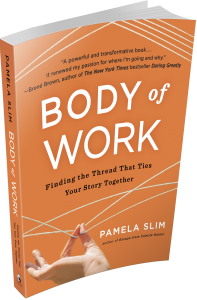 I have followed Pamela’s work over the years and earlier this year, I had a chance to meet with her briefly. It was in Boston and Pamela had just heading back to the hotel after dinner with some super smart clients of hers. She must have been super tired with everything in the day. However, the moment we started a conversation, Pamela came fully alive and engaged with me as if we have personally known each other for more than a decade. It was not pretense but a genuine interest in what I was up to and if and how she could help. The warmth was unbelievable.
I have followed Pamela’s work over the years and earlier this year, I had a chance to meet with her briefly. It was in Boston and Pamela had just heading back to the hotel after dinner with some super smart clients of hers. She must have been super tired with everything in the day. However, the moment we started a conversation, Pamela came fully alive and engaged with me as if we have personally known each other for more than a decade. It was not pretense but a genuine interest in what I was up to and if and how she could help. The warmth was unbelievable.
Since we had talked briefly about the “Body of Work,” I was eagerly looking forward to reading it. A few weeks ago, the book arrived on a Saturday. I started reading and it is one of those “un-put-downable” books so I finished reading the entire book by 11PM on the same day.
While the book is a super easy read, the magic is not in just reading but actually digging deeper, questioning, reflecting and actually doing the exercises that Pamela has thoughtfully designed.
I have taken tiny bits and pieces from the FIRST key chapter of the book to give you a sneak preview of the brilliance of the book
That chapter is called “Define Your Roots”
Your roots are the purpose, beliefs, and convictions that provide the foundation for your body of work.
A few questions Pamela asks at the outset:
1. Why are you doing whatever you are doing?
2. What will happen if you succeed?
3. Will it be worth it even if you fail?
4. Why does it matter?
5. What will you regret not doing?
6. What will you rejoice leaving as a legacy at the end of your life?
Next, Pamela wants you to identify your roots.
How do you that?
Pamela suggests that you reflect on the following six primary questions:
1. What do you value?
Your values describe what is most important to you. They help you guide you to make decisions and set boundaries around what you will accept in your life and your career.
2. What do you believe?
Your beliefs are unique to you and form the foundation for how you interpret and act in the world.
3. Why do you believe it?
Since nobody is “born” with a set of beliefs, it must be circumstances and experiences that must have shaped those beliefs. It is good to reflect on the source of those beliefs.
4. Whom do you care deeply about serving?
Of all the people who you could impact during your time on earth, whom do you want to work with? Which type of person “gets” you and needs what you have to offer?
5. Which problems do you want to solve?
Which challenges get you really fired up? What impact do you want to have in the world? What specific knowledge you have that you think can make a difference in the world?
6. What drives you to act?
Most of us have long to-do lists. Very few of us can check off every item at the end of the day. What motivated you to accomplish great things in the past? What motivated you to finish? Pay special attention to thoughts, conditions, or techniques that caused you to take action.
I will be re-reading the book again in the next few weeks because it is just that good.
The release date for “Body of Work” is December 31 and I can confidently say that it will be one of the “game changing” books you will read in 2014.







December 28, 2013
Bringing Out the F.I.R.E. Within You
Note: As part of a contest on one of my favorite sites Copyblogger, the goal was to write a 250-word essay on why one should become an online authority. Here was my submission
As part of his Linchpin book launch, Seth Godin made an offer to his blog readers. Anyone who donated $30 to Acumen Fund would get a review copy of his book. 3,000 books were given away in less than 48 hours. As you can see, an online authority can move the needle with speed and with ease.
Being an online authority brings out the F.I.R.E within you. Let me explain.
1. Fun | What could be more fun than seeing your ideas come to life with speed and ease?
2. Influence | Your followers will not only look up to you for ideas and thought leadership, many of them will also take action based on your ideas.
3. Reach | You network will grow which in turn will expand the space of possibilities for you to make a bigger difference.
4. Effortless Giving | Seth Godin raised close to $100K for Acumen fund in less than 48 hours. Seth’s “work” in those 48 hours was limited to writing and publishing a blog post highlighting the offer. You too can practice effortless giving once you become an online authority.
Yes, it takes a lot of investment and commitment to BECOME an online authority. You also need to continue to make some investments to keep that place. But once you are there, you can bring out the F.I.R.E within you.







December 27, 2013
Metrics That Matter Most for 2014 (free PDF)
Note: I created this checklist a couple of years ago and it has served me well. No changes on the checklist except the dates. Please feel free to download, modify, re-use or share.
We are obsessed about measuring everything. We want to know the number o connections, number of followers, number of pageviews, number of minutes someone spends on our website, number of clickthroughs, number of times the shopping cart was abandoned, number of repeat visitors, number of new visitors.. and the list goes on.
Sometimes we forget that most of what we measure is means to an end and not the end itself.
Sometimes we forget that many things we should focus on cannot be measured with any scale (caring, love, joy, happiness, compassion etc.)
Sometimes we forget that we are in a rat race where everyone including the winner loses.
Sometimes we forget that we forget to see the forest for the trees. We want to improve on the metrics for the sake of improving on the metrics.
Sometimes we forget to measure the amount of time we spend being obsessed with measuring the metrics.
Measuring the wrong things is like running fast in the wrong direction.
End of the year is a great time to stop, reflect and think about what are the metrics that really matter most to you.
 I have created a ONE PAGE self-asessment checklist called “Metrics That Matter for 2014.” You can download it by clicking on image to the left or the download button below. No registration required. You are, of course, welcome to modify this by adding your own questions.
I have created a ONE PAGE self-asessment checklist called “Metrics That Matter for 2014.” You can download it by clicking on image to the left or the download button below. No registration required. You are, of course, welcome to modify this by adding your own questions.
Although it’s only one page and you can skim through that page in less than a minute, my request is not to rush through it. Reflect on each question for the last two years and make a promise to yourself about that number for 2014. Good luck with the exercise.
Request: Send this blog post or the PDF to one or more people that you care and help them create an year that they will remember for the rest of their lives.
Photo Credit: Darren Hester at Flickr.







December 18, 2013
Here is the problem
The fastest way to get attention is to point to a problem and say, “Here is the Problem.” It gets even more easier to get attention on social media if you point to problems. There is a tendency for people to gather around you to express whatever you want to call it – empathy or sympathy as the case may be.
You do this a few times and getting that kind of attention can become an addiction. After sometime getting to the “Here is the problem…” situation becomes automatic and you will start looking for problems to highlight.
Don’t get me wrong. There is a good side of the above as companies (and even Government institutions in some cases) are now more caring as they know that people to have the power. Mistakes and not-so-caring acts are not only exposed but also get amplified via the social media.
The real problem?
You are now so used to pointing fingers with “Here is the problem…” that you start following the same logic for problems that you can do something about because just pointing fingers is easier than doing something about it.
Sadly, you will get attention for those problems as well from most people. But people that matter (e.g.: Your Boss) will often be confused and mostly annoyed with your behavior. You might have been carried away with pointing fingers but THEY know that you could have done something about that problem.
You can get attention alright but you won’t get ahead by simply pointing fingers about problems that you COULD have done something about.
If you want to make a difference in the world and in turn make a difference in your own life, then you have to follow “Here is the problem…” with “And here is what I am doing about it.”
It’s a lot of work to do something about a problem but that is what will separate the signal from the noise.







November 28, 2013
Not Too Busy to Say Thank You
Note: I wrote an article for Huffington Post titled – “Too Busy to Say Thank You” and you might want to read that before you read this article.
I have been a long time fan of Sally Hogshead (@sallyhoghead on Twitter) and she recently posted a short and touching story on Facebook.
The photo and the story are below:
“30 years ago, a man fell out of a tree stand and broke his back. He was paralyzed. My Dad, an orthopedic surgeon, sets the fracture. He made a 100% recovery. Every year, he sends our family a box of pecans. This is the 30th year.”
The story is short and it can get lost in the social media jungle. It’s an important story with a brilliant lesson in it. So I asked Sally’s permission to re-tell the story and the lesson on my blog.
Think about it. Sally’s Dad – Dr Howard Hogshead gave the person a life changing gift and almost a new life. How long should the person be grateful to Dr. Hogshead? Simple – throughout his lifetime. That is exactly what he is being showcased via the thoughtful gifts that he is sending every single year. I am sure it would have brought smiles at the Hogshead household.
Think about your own life. It may not be as dramatic as the story highlighted above but you can surely think of dozens of people who have given you life-changing gifts, gifts that have changed the trajectory of your life in ways that you had not imagined before. The question to reflect upon is – “Are you showing those kind souls a lifetime of gratefulness?”
The key takeaway to remember on this Thanksgiving day and every day thereafter:
Life changing gifts deserve a lifetime of gratefulness | Tweet This







November 15, 2013
A Foolproof [Re] Starter Plan
The foundation for tomorrow will be laid laid with a) how you handled yourself in the past and b)how you handle yourself today. Since you can’t do anything about what happened in the past, we can only think about what you can do today for a better tomorrow.
A foolproof [re] starter plan includes only two items:
1. Daily Delivery of Real Value Beyond What’s Required for Your Job
2. Daily Investment to Boost Your Future Capacity to Deliver Value at a Lower Cost
I am calling it the [Re] Starter Plan because you should have already been implementing this 2-part plan in your daily life.
Let’s look at both the items above in a bit more detail:
1. Daily Delivery of Real Value Beyond What’s Required for Your Job
If you do what is required for your job, you and I know that very soon you will be history. If you can make it a habit to add “real value” to someone in your network every single day, it will turn out to be golden. Irrespective of what you get back from walking that extra mile, the very act of engaging in the value creation process will put you on a fast track growth path
Creating real value requires you to move the needle in a meaningful fashion for one or more people. It has to be real meaning not something you perceive it as valuable but the recipient acknowledging it as such.
1. Daily Investment to Boost “Your Future Capacity to Deliver Value at a Lower Cost”
Since you and I can’t change the fact that we have only 24 hours to play with, the only variable we can work with is how much value we can pack in those 24 hours that are handed to us. The value that you can pack solely depends on your capacity, the leverage you have with your network and the motivation to actually do something meaningful with time.
Assuming you have the motivation part taken care of, the levers you can work on is your capacity and building the network to give you leverage in the future.
To grow yourself and your network meaningfully, you need a serious investment. Sadly, you can get away with actions of entertaining in the name of educating yourself for a long time. There is enough entertainment material out there that looks like educational material. The only way to measure your own progress is to ask yourself – “What does it take for me to create meaningful value in terms of time, energy and effort as compared to last week or last month?” If you are on the right path, your costs to deliver meaningful value should keep dropping on a continuous basis.
If we have to summarize the 2-part plan in simple terms, it boils to this.
Make a valuable contribution today while building your capacity to make an even more valuable contribution tomorrow.
All the best!







Rajesh Setty's Blog
- Rajesh Setty's profile
- 6 followers


